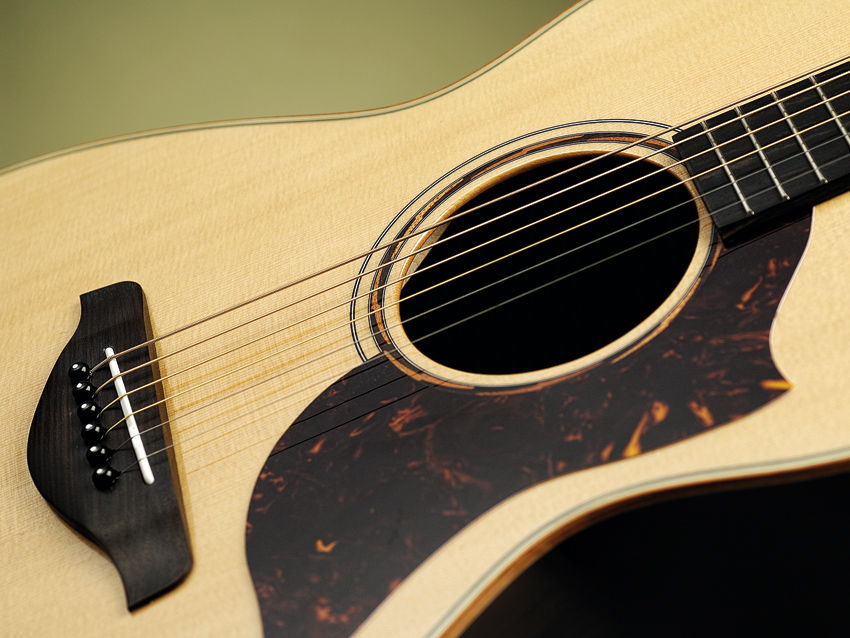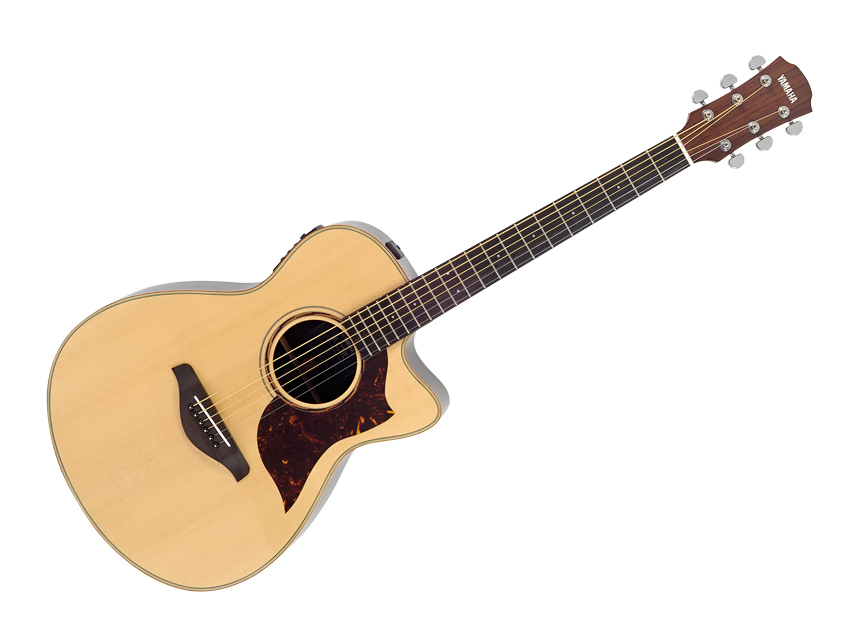MusicRadar Verdict
Grade-A concert picker emphasises all-round high standard of Yamaha's new range.
Pros
- +
Picking clarity; preamp's imaging versatility; slinky neck.
Cons
- -
Rustic, open-pore neck finish.
MusicRadar's got your back

Yamaha AC3R

Yamaha AC3R
Yamaha doesn't often launch an entirely new line of acoustics. Instead, the FG, APX/CPX and L ranges have evolved or been revised over the years. All of which makes the recent introduction of the A Series cutaway electros a significant one.
Comprising eight models split between the solid-top 1s and all-solid-wood 3s, guitars are then sub-divided into rosewood- and mahogany-backed versions. The range focuses on just two body styles: dreadnought and concert.
"The AC3R has a crisp, piano-like attack and sustain, with excellent mid-range clarity and separation, and a very pleasing picker-friendly articulation."
The 1s carry a three-band analogue preamp, while the 3s load in an SRT mic-imaging blender system. Both use the new SRT undersaddle pickup - incorporating six individual piezo elements on a wide ribbon strip - recently seen on the APX/CPX1000 and APX500II.
In pricing terms the As, loosely speaking, slot into the catalogue between the FGs and the L-Series derivatives. Yamaha's aim is to appeal to gigging and recording guitarists looking for a serious performance instrument, as opposed to, say, the FGs which have a more playing-at-home vibe.
The A Series' revised neck configuration and string spacings are intended to more overtly attract the electric-leaning player. It's understood that much of the impetus behind the development of the A Series came from Yamaha in the USA.
Given that and the guitars' mid-market pricing between around £600-£900, it's hard not to infer that the company has Taylor's 100 and 200 Series on its hit-list.
The all-solid Sitka/rosewood AC3R might be called a concert, implying a smallish body, but the rims are actually a few millimetres deeper than the corresponding dreadnought's, and allied with a near 15-inch lower-bout span, the soundbox is quite capacious.
Trim-wise, you get a mahogany and rosewood-inlaid soundhole rosette and an ebony bridge and fingerboard, the latter being bound with rosewood. The back also carries a wood (mahogany?) centre strip. The neck configuration, finish and string spacing are dead ringers for the dreadnought's.
There's plenty happening on the System 63 SRT preamp. Apart from three-band EQ and the pickup/image blend control, there's a selector for the three mic images (Neumann U67 and KM56, and Royer R-122) with a choice of 'focus/wide' (far or close mic'ing) for each; a five-band AFR anti-feedback filter that can be triggered progressively and which proves mightily effective; and a resonance rotary - dedicated to the image signal - which in practice subtly adds lower-end warmth and body.
The tuner usefully mutes the system and can also be recalibrated between 438Hz and 445Hz for accompanying instruments that are slightly off concert pitch. Handy.
Sounds
The AC3R has a crisp, piano-like attack and sustain, with excellent mid-range clarity and separation, and a very pleasing picker-friendly articulation. If all this sounds rather un-rosewood-like, be assured that the requisite low-end richness is present and correct.
SRT translates these traits admirably and the powered tones, whether pickup, image or blended, have a distinctly hi-fi-like quality without sounding cold or clinical.
Which image you might prefer is a matter of personal taste - they sound fairly similar. But the best thing, unlike with some blenders, is that high ratios of image-to-pickup can be used without introducing too much artificiality, making this an engagingly 'musical' system.
It's also worth noting that there is more gain on tap than from early SRT systems we tried, which were frankly rather feeble. So that's good news too.
Taking the decision on whether to opt for the 3's all-solid spec over its cheaper counterparts such as the A1M may ultimately rest less with your budget, and more by which preamp better suits your needs.
For players doing a lot of recording, not just live gigs, the imaging system is likely to edge it for its ability to add mic-led textures and its enhanced overall versatility.
One thing's for sure, though: the new A Series are well-sorted instruments, built to Yamaha's usual high standards, sounding good and playing well. In short, sound investments.
“If they were ever going to do the story of Nero, probably the most decadent of all the emperors, they would have to use Roy Thomas Baker”: Tributes to the legendary producer of Queen, Alice Cooper, Journey and more
“Built from the same sacred stash of NOS silicon transistors and germanium diodes, giving it the soul – and snarl – of the original”: An octave-fuzz cult classic returns as Jam Pedals resurrects the Octaurus
What’s the buzz? Meet Yellowjacket, Cherry Audio's recreation of EDP’s trend-setting Wasp from 1978









